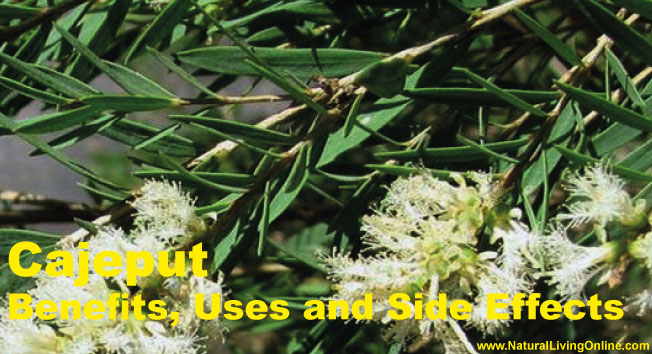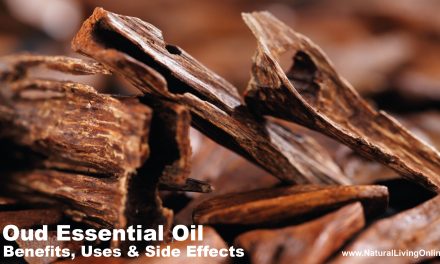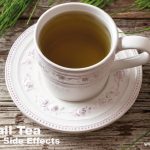Cajeput essential oil has a number of different uses, both in aromatherapy and in traditional medicine. It is known to have antiseptic and antimicrobial properties, making it an ideal treatment for wounds and skin infections. Additionally, cajuput oil can be used as a natural decongestant and expectorant, helping to clear congestion associated with the common cold or flu.
Cajeput essential oil is derived from the leaves and twigs of the cajeput tree, a member of the myrtle family, which also includes clove, eucalyptus and tea tree. The name cajeput is derived from the Indonesian word kayu putih, which means “white wood.”
What is Cajeput?
Cajeput is an evergreen tree that grows up to 30 feet tall and is native to Southeast Asia, Indonesia, and parts of Australia. The oil is extracted from the leaves and twigs of the tree.
Different types of Cajeput:
There are two main varieties of cajeput tree, Melaleuca cajuputi and Melaleuca leucadendron, both of which yield similar oils.
How Cajeput Essential Oil is made?
Cajeput essential oil is produced via steam distillation of the leaves and twigs.
What is the botanical name of Cajeput?
Cajeput is botanically known as Melaleuca cajuputi.
What is the chemical composition of Cajeput Essential Oil?
The chemical composition of cajeput essential oil varies depending on the variety of tree that it is produced from. However, the primary active compounds in all cajeput oils are terpinen-4-ol and 1,8-cineole.
What are Cajeput Essential Oil benefits?
Cajeput essential oil has a number of different benefits, including its use as an antiseptic and antimicrobial agent to treat skin infections and wounds. Additionally, cajuput oil can be used as a natural decongestant and expectorant to help clear congestion associated with colds or the flu.
What are ways to use Cajeput Essential Oil?
The most common way to use cajeput essential oil is by inhaling it using a diffuser or steam inhalation. It can also be applied topically to the skin, although it should be diluted with a carrier oil first.
How can I use Cajeput Essential Oil internally?
Cajeput essential oil should not be taken internally unless under the supervision of a qualified healthcare practitioner.
How can I use Cajeput Essential Oil topically?
When using cajeput essential oil topically, it should be diluted with a carrier oil such as jojoba or coconut oil. A 2-3% dilution is typically sufficient.
How can I use Cajeput Essential Oil in aromatherapy?
When using cajeput essential oil in aromatherapy, it can be diffused using a diffuser or added to a steam inhalation.
Great Essential Oil diffuser blends for aromatherapy with Cajeput Essential Oil:
Energizing Blend: 3 drops lemon, 2 drops rosemary, 2 drops cajeput
Focus Blend: 3 drops basil, 2 drops peppermint, 2 drops cajeput
Immune-Boosting Blend: 4 drops eucalyptus, 3 drops rosemary, 3drops cajeput
Relaxing Blend: 3 drops lavender, 3 drops chamomile, 2 drops cajeput
Respiratory Support Blend: 4 drops eucalyptus, 3drops peppermint, 3drops cajeput
Stress Relief Blend: 5drops lavender, 4drops orange, 1drop cajeput
Warming Winter Blend: 5drops cardamom, 2drops clove, 2drops cajeput
How can I use Cajeput Essential Oil in bath?
When using cajeput essential oil in the bath, add 5-10 drops of oil to a tub of warm water. Mix well and soak for 20 minutes.
How Cajeput Essential Oil has been used historically as an alternative medicine?
Historically, cajeput essential oil has been used as an antiseptic and antimicrobial agent to treat skin infections and wounds. Additionally, cajuput oil has been used as a natural decongestant and expectorant to help clear congestion associated with colds or the flu.
What blends well with Cajeput Essential Oil?
Cajeput essential oil mixes well with other therapeutic oils, including eucalyptus, peppermint, lemon, and lavender.
What does not blend well with Cajeput Essential Oil?
Cajeput essential oil is not recommended for use with other strong-smelling essential oils, including citrus oils and rosemary.
What are Cajeput Essential Oil side effects?
Some people may experience irritation or a burning sensation when using cajeput essential oil topically. Additionally, cajuput oil should be avoided by pregnant women and those with sensitive skin. If you are taking medication, consult your healthcare practitioner before using cajuput essential oil. Do not use cajuput essential oil if you have any medical conditions.
When used as directed, cajeput essential oil is generally safe for most people. However, side effects can occur if the oil is used in excess or if it is not diluted properly. If you experience any side effects, discontinue use and consult your healthcare practitioner.
What does Cajeput Essential Oil smell like?
Cajuput essential oil has a strong, camphorous scent with subtle citrus notes. It is one of the most potent essential oils available.
Can I make Cajeput Essential Oil at home?
Cajeput essential oil can be made at home using the following recipe:
2 cups of cajuput leaves
1 cup of water
1/4 cup of carrier oil
Instructions:
1. Add the cajuput leaves to a blender and blend until smooth.
2. Add the water and carrier oil, and blend again.
3. Pour the mixture into an amber glass bottle and store in a cool, dark place.
4. Use within six months for best results.
What is the shelf life of Cajeput Essential Oil?
When stored properly, cajuput essential oil can last for up to two years.
Is Cajeput Essential Oil safe for kids?
Cajeput essential oil should not be used on children under the age of 12.
Can Cajeput Essential Oil be used on pets?
Because cajuput essential oil is highly concentrated, it should not be used on pets without first consulting a veterinarian.
DIY recipes using Cajeput Essential Oil:
1. Diffuser blend: Mix 5 drops of cajeput essential oil with water in a diffuser to help clear congestion and promote relaxation.
2. Homemade cough syrup: In a saucepan, combine 3 ounces of raw honey with 1 ounce of cajeput essential oil and heat over low heat for 5 minutes. Let cool, then administer to children as needed to help soothe a cough or sore throat.
3. Soothing chest rub: To make a soothing chest rub, mix 2 tablespoons of coconut oil, 10 drops of cajuput essential oil, and 5 drops each of eucalyptus, rosemary, and peppermint oils. Gently massage onto the chest and back as needed to relieve congestion.
4. Natural insect repellent: Mix 2 ounces of cajeput essential oil with 8 ounces of carrier oil and 10 drops each of lemon, lavender, and peppermint oils. Apply to the skin to repel insects such as mosquitoes and gnats.
5. Foot soak: To soothe tired feet, mix 5 cups of Epsom salt with 20 drops of cajeput essential oil in a large bowl of warm water. Soak your feet for 15-20 minutes and enjoy the relaxing scent and therapeutic benefits.
Cajeput essential oil is a potent, therapeutic oil that is commonly used to relieve congestion associated with colds and the flu. It blends well with other oils such as eucalyptus, peppermint, lavender, and lemon. However, it should not be used in excess or by those with sensitive skin. In addition to its health benefits, cajeput essential oil can also be used in a variety of DIY recipes, including diffusers, cough syrups, chest rubs, insect repellents, and foot soaks. Its shelf life is about two years when stored properly, and it can be used on both children and pets when used safely. When using cajuput essential oil, always start with a small amount and increase as needed.
This website does not provide medical advice.
All information provided on this website, and on associated social media networks, including but not limited to texts, images, and numbers are for general information purpose only. It is not intended as medical advice and it does not include all possible precautions, side effects, or interactions that may occur. Neither NaturalLivingOnline.com nor its author/founder take responsibility for how you use this information. Statements contained on NaturalLivingOnline.com have not been evaluated by the FDA. You should conduct thorough research via multiple sources and consult your physician or qualified doctor before using any essential oil or herbal remedy. Information on NaturalLivingOnline.com must not be relied upon for medical, legal, financial or other decisions.













